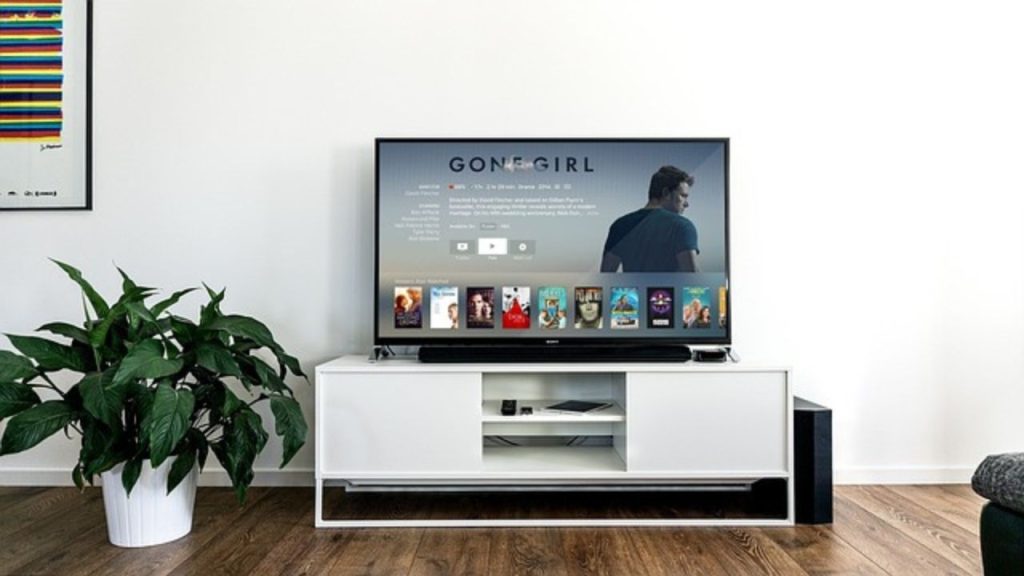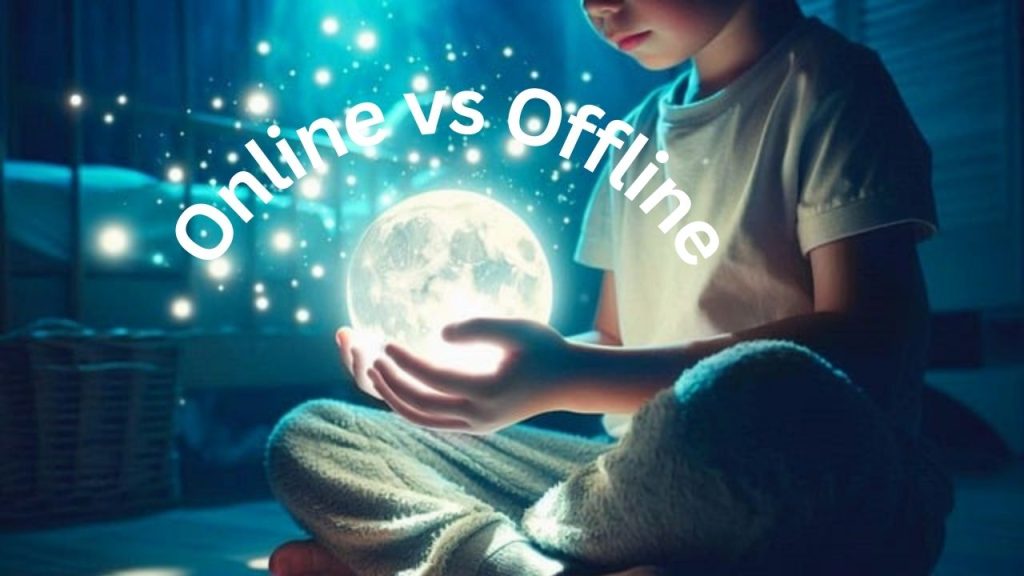The distinction between online vs offline is becoming increasingly hazy in today’s fast-paced digital world. The decision of whether to use the internet or not impacts nearly every part of our life, including how we communicate, learn, purchase, and even socialize. What then is the true distinction between the two, and how do they affect our day-to-day activities?
Let’s explore the advantages and disadvantages of both online and offline environments and how they affect our daily lives, careers, and interpersonal relationships.
Online vs Offline
1. The Convenience Factor: Online Wins Big

Let’s be honest—one of the biggest reasons people go online is convenience. Want to buy a new phone? A few clicks, and it’s delivered to your door. Hungry? Scroll through a food delivery app, and voilà! Pizza on your doorstep in minutes. The online world makes things incredibly easy, often requiring minimal effort on our part.
But convenience goes beyond shopping or ordering food. The rise of online banking, for example, has made managing money far less of a headache. Instead of waiting in long lines at a bank, you can handle your finances from the comfort of your couch.
However, this convenience can come with a cost. The instant nature of online experiences can lead to impulsive decisions, like splurging on things you don’t really need just because they were “one click away.” Plus, the anonymity of the online space can sometimes make people feel detached from real-world consequences. Ever found yourself browsing mindlessly or binge-watching when you planned to do something else? That’s the downside of too much online convenience!
2. Social Interaction: Face-to-Face or Screen-to-Screen?

Things start to become intriguing at this point. Social contact is a topic of great contention in the online vs. offline discussion. Spending so much time online is it causing us to lose contact with one another?
On the one hand, it’s now simpler than ever to keep in touch with people, wherever they may be in the globe, thanks to internet tools like social networking, video chats, and messaging applications. The internet has simplified long-distance communication, whether you’re using it to catch up with an old buddy on Facebook or to make a business Zoom call. Furthermore, face-to-face encounters might occasionally feel less scary than online contact for introverts or those with social anxiety.
Conversely, nothing comes close to the warmth of face-to-face connection. In a digital communication, the subtleties of body language, facial expressions, and even basic gestures are gone. It may make all the difference in the world to get coffee with a buddy, laugh heartily together, or just sense their presence.
Online communication is sometimes shallower as it’s centered on one-sided comments, likes, and emoticons. Conversely, encounters that take place offline can feel more authentic and important, which over time strengthens connections. Therefore, even while communicating online is practical, there’s no denying that interacting with people in person fosters a stronger sense of connection.
3. Learning: Digital Classrooms vs. Traditional Schools

One of the biggest shifts in recent years has been the shift to online learning. The way we approach education has changed as a result of the usage of online learning, from COVID-19 virtual classrooms to e-learning platforms like Coursera and Udemy.
Online education offers a significant benefit in terms of flexibility. You may learn on your own schedule and at your own pace from anywhere in the world. Because of the wide range of courses available, you may learn anything from computer skills to cuisine without ever entering a classroom.
On the other hand, there are particular challenges associated with online learning. It becomes imperative to exercise self-control. Without the structure of a regular classroom, it is easy to procrastinate or become distracted. Additionally, it can be cognitively taxing to stare at a screen for extended periods of time. On the other hand, an interactive learning environment is offered via offline learning, which might take place at a training session, college, or school. Students can participate in group discussions, pose direct questions, and gain from in-person mentoring. Less distractions are available in physical classrooms, which aids in students’ ability to concentrate on their academics. Nevertheless, offline learning is less adaptable, and many people may find the strict timetables to be restrictive.
What then is superior? It is dependent upon your learning style and personal preferences. While some people are better off in an online setting, others long for the structure and social interaction that come with traditional offline learning.
4. Shopping: Clicking vs. Browsing in Person

The online vs. offline debate has taken over the shopping world in a big way. Thanks to e-commerce giants like Amazon, online shopping has skyrocketed in popularity. The ability to browse thousands of products, read reviews, and compare prices all from your phone or computer is a game-changer. Plus, there’s the added bonus of home delivery—especially appealing during busy times like the holiday season.
But as convenient as online shopping is, it has its downsides. For one, you can’t physically see or touch the product before buying it. How many times have you ordered something online only to find out it looked nothing like the pictures? Additionally, the immediacy of online shopping can lead to impulsive buys or overspending.
Offline shopping, on the other hand, allows you to experience the product firsthand. You can try on clothes, test gadgets, or see the quality of an item up close. Plus, going to a store can be a fun, social activity—whether it’s a weekend trip to the mall or browsing through a local market with friends.
That said, offline shopping isn’t always convenient. Driving to the store, dealing with crowds, or searching for parking can be frustrating. Not to mention, your favorite item could be out of stock, forcing you to make a return trip.
5. Work: Remote vs. Office Life

The argument over online vs offline work practices has revolutionized how we approach our professions in the workplace. Many workers have switched from typical office settings to working from home—or anyplace with an internet connection—as remote work has become more popular.
Working remotely has several clear advantages. A few benefits include the option to work from home, the elimination of lengthy commutes, and the liberty to choose your own hours. Additionally, working remotely improves work-life balance by allowing employees more time to engage in personal hobbies or spend with their families.
Not everyone, though, is suited for remote work. The absence of a designated workstation might cause burnout by making it difficult to distinguish between work and family life. It may also seem alienating to people who thrive in a team environment or miss the social interaction of an office setting.
On the flip side, working offline in a traditional office brings structure and routine, which some people find motivating. Face-to-face collaboration with coworkers can lead to more creative ideas and quicker problem-solving. Plus, many enjoy the camaraderie that comes with office life—the water cooler chats, team lunches, and spontaneous brainstorming sessions.
6. Entertainment: Streaming vs. Going Out

Another domain in which the online vs offline argument is debated is entertainment. We have a seemingly limitless selection of entertainment alternatives at our fingertips because to streaming services such as Netflix, YouTube, and Spotify. Do you want to binge-watch a new series or the newest film? From the convenience of your own home, you may complete it.
Personalization is an additional benefit of online entertainment. Because algorithms provide recommendations for material based on your interests, you’re always finding new podcasts, music, and television series that appeal to you.
Even though streaming is so convenient, the experience of offline entertainment still wins out. It’s difficult to match the thrill and ambiance of going to a live sporting event, movie theater, or concert. There’s something special about being part of a live audience and sharing that experience with others.
Conclusion
Finding a Balance Between Online and Offline Resources
Because each setting has advantages of its own, there is no clear winner in the online vs. offline debate. It’s important to find the right balance for you. Online interactions offer flexibility and instant access to almost anything you need, making them incredibly useful. The physical connections, deeper relationships, and sense of presence that come from offline encounters cannot fully be replicated in digital spaces.
It comes down to selecting the best of both worlds in a world when online and offline alternatives are easily accessible. The best aspects of both worlds may be combined to create a lifestyle that combines the efficiency of the internet world with the depth of in-person encounters. There’s a time and place for everything—shopping, working, studying, and socializing.




